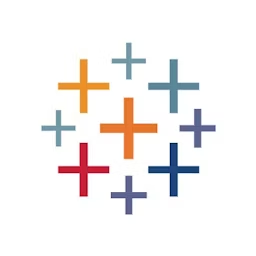In this report, we define and compare data analysis software and statistical analysis software so you can decide which tool is better suited for your needs.
Both data analysis and statistical analysis software solutions have common business applications, i.e., solving business queries by deriving insights from data. However, to do so, the former establishes a relationship between data points, and the latter uses mathematical models.
Despite having a common goal, the tools’ different methods of dealing with data set them apart. In this report, we'll identify the similarities and differences between the two software categories and help you select the right one for your business requirements.
What is data analysis software?
A data analysis tool enables users to analyze and visualize data. This tool cleans and processes raw data sets, establishes a relationship between data points, and identifies trends in order to present actionable insights and support data-driven business decision-making.
Data analysis software can perform various types of data analytics, such as descriptive analysis, diagnostic analysis, predictive analysis, and prescriptive analysis. Since this software category is capable of providing real-time results, it can be used for on-the-spot decision-making.
Our lists of data analytics companies by location can help you find the services you’re looking for.
What is statistical analysis software?
Statistical analysis software allows organizations to take full advantage of the data they possess to uncover business opportunities and increase revenue. It includes specialized solutions designed to work with particular statistical languages, such as Python and R, as well as more general applications that automate various data-manipulating operations, such as power analyses and data visualization.
The two major branches of statistical analysis are descriptive statistics and inferential statistics. The former describes the properties of sample data such as what has happened over a given period while the latter uses properties drawn from descriptive statistics to test hypotheses and make conclusions.
What do they have in common?
Both data analysis and statistical analysis software solutions are used to explore and analyze data sets. They both offer functionality for data collection and cleaning. Since both of them are a component of one another, a data analyst or a data scientist understands statistical tools, and a statistician has an understanding of programming languages such as R as well.
Data analysis software features
Statistical analysis software features
Which tool is right for you?
Data analysis software solutions are right for you if you have a vast amount of data. These solutions inspect, clean, model, and present that data in a comprehensible manner for easy understanding of non-technical users. They use machine learning (ML), artificial intelligence (AI), and automation to translate complex data into readable information.
Go for statistical analysis solutions if you have a limited amount of data or a small sample size. To process this data, the tools in this category use theories based on mathematics such as differential and integral calculus, linear algebra, etc.
The question now is: Which specific tool is right for your business? To start your search, head over to our data analysis software or statistical analysis software pages. There you’ll find a sortable list of products, software reviews from verified users, and comprehensive buyers guides.
If you wish to narrow down your search to only the most popular and highest-rated solutions, visit Capterra’s Shortlist report for the top data analysis tools and statistical analysis tools, based on an analysis of thousands of user reviews.
3 top-rated data analysis and statistical analysis software
These three products, listed in alphabetical order, are among the top-rated in both software categories.
Trial/Free Version
- Free Trial
- Free Version
Device compatibility
Trial/Free Version
- Free Trial
- Free Version
Device compatibility
Trial/Free Version
- Free Trial
- Free Version
Device compatibility
Note: Reviews and rating data in the product cards are as of June 17, 2022. New reviews may have been added since the publication of this article, so the review data in this piece may not reflect current conditions.
The products in the category comparison images are examples to show a feature in context and are not intended as endorsements or recommendations by Capterra. They have been obtained from sources believed to be reliable at the time of publication.


